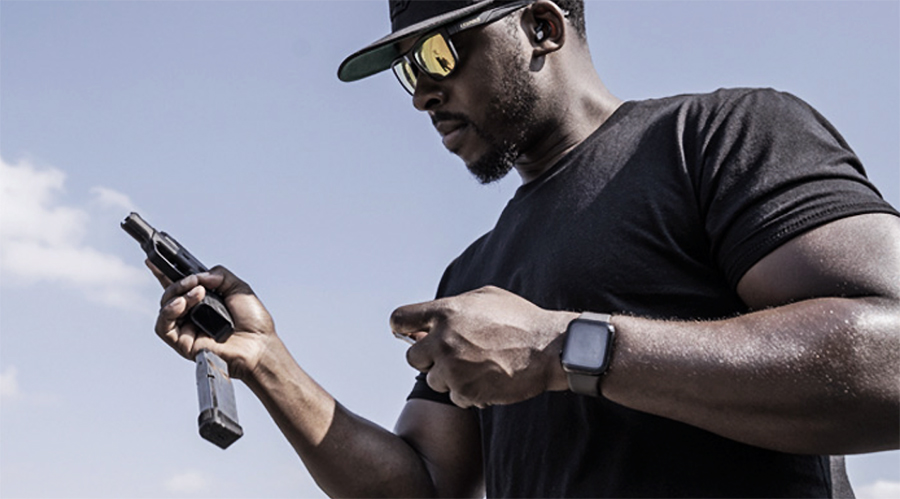Sturm, Ruger & Co. posted solid year-over-year sales and earnings growth in the third quarter, but sequential quarter comparisons with the company’s second quarter caused concern on Wall Street as RGR shares fell over 8 percent on Thursday.
At the center of concern is the sharp decline in the company’s dividend for the quarter payable in November, which will decline 21 percent compared to the second quarter dividend payout to shareholders. RGR pays out a dividend at approximately 40 percent of net income for the quarter.
The company saw net sales grow 22.3 percent to $178.2 million in the third quarter, compared to $145.7 million in the comparable quarter last year. While a strong double-digit growth number appears favorable, the increase came up short of the second quarter’s growth of 53.5 percent and the 50 percent year-to-date figure. Earnings rose 41.5 percent to $35.1 million, or $1.98 per share, from $24.8 million, or $1.39, in the year-ago period.
The growth slowdown was attributed to three key factors.
First, company CFO Tom Dineen shared with analysts on a conference call Thursday that the company shut all firearms facilities for a week in early July to give employees a break after a record run of sales and make changes at the factories. The decrease in production also resulted in unfavorable de-leveraging of fixed costs.
“As Tom mentioned earlier, after an unprecedented 16-month run of seemingly insatiable product demand and continual monthly production increases, we took a one-week shutdown during the first week of July,” explained company CEO Chris Killoy.” This was our first shutdown in two years, which gave our workforce a very well-deserved break and allowed us to perform routine maintenance and reconfigure some of our manufacturing operations. The shutdown reduced our third-quarter production, sales and earnings, but that was a small price to pay. It was the right thing to do, and I’m glad we did it.”

Killoy, pictured on right, estimated that the shutdown had a 7 percent to 8 percent impact on production.
“Since March of 2020, our workforce has been strengthened by 370 folks, an increase of just over 20 percent, and our quarterly unit production has increased by more than 160,000 units, or 45 percent, during that period,” Killoy shared. “A 20 percent increase in personnel yielding a 45 percent increase in production? That is a tremendous accomplishment by our operations team at all of our manufacturing plants. Our dedicated and hardworking folks deserved and needed a break and, after the shutdown, we were better prepared as we head into what we expect will be a busy fourth quarter and 2022.”
Second, after what management described as a “relatively quiet second quarter,” the company saw COVID positive cases in its plants more than triple in the third quarter. Dineen said this resulted in significant increases in lost production.
“Since the onset of the COVID-19 pandemic in March 2020, we have remained proactive in maintaining the health and safety of our employees and mitigating its impact on our business,” Killoy added. “We provide all hourly employees with additional paid time off and offer incentives to any employee who gets vaccinated. If practical, we allow employees to work remotely, and we continue to follow robust cleaning, sanitizing and social distancing protocols to maintain a cleaner and safer workplace.”
Lastly, Dineen pointed out that following six quarters of exceptional demand, accessory sales decreased from the second quarter adversely impacting its overall profitability.
Still, Killoy sees no slowdown in demand as finished goods inventories remained near historic lows and distributor inventories of Ruger products were said to be 150,000 units lower than they were at the end of 2019, the last time inventories were at what Killoy said they would consider “normal or expected pre-COVID-19 levels.”
“Demand for our products remained strong,” Killoy said. “Despite a moderation of overall industry demand as reflected in the last two quarters of an adjusted mix, we shipped all the firearms that we built this quarter without the need to aggressively promote or discount any of our products. We’ve just begun to replenish the distributor and retail inventories that were largely depleted over the past 18 months, putting us in a great position as we head into the fourth quarter, which has traditionally been a period of strong demand.”
In response to an analyst’s question, Killoy said the company looks at what their distributors are selling rather than weekly or monthly units ordered. “When you think about it, we had a very full, and still have a very full, order book when we entered Q3, and then when we entered Q3, we’re still at 1.3 million units on order at the end of Q3. And, at some point, our distributors have enough on order.”
Killoy said the estimated unit sell-through of the company’s products from the independent distributors to retailers increased 9 percent in the first nine months of 2021 compared to the prior-year period, while for the same period the National Instant Criminal Background Check System (NICS) background checks (as adjusted by the NSSF), decreased by 11 percent.
He said the increase in the sell-through of the company’s products compared favorably to the decrease in adjusted NICS checks and may be attributable to strong consumer demand for Ruger products, increased production in 2021 and the introduction of new products that were met with strong demand.
“New product development continues to drive results,” Killoy emphasized on the call. “The MAX-9 pistol (shown lead photo) and the Ruger LCP MAX pistol, which were launched in 2021, remain in strong demand. In the first nine months of 2021, new product sales represented $116 million, or 22 percent, of firearm sales compared to $88 million, or 24 percent, of firearm sales in the first nine months of 2020.
“We just met with our distributors at the National Association of Sporting Goods Wholesalers [NASGW] show in Columbus, OH last week, Killoy continued. “And that’s a pretty healthy order book at 1.3 million units. At some point, the incoming order rates slow. They know that they’ve got enough orders on in with Ruger. They know the orders with Ruger are non-cancellable, unlike some other companies, and that’s primarily the reason.”
RGR’s cash and short-term investments totaled $192.7 million at quarter-end. The current ratio was said to be 3.8 to 1. The company had no debt at quarter-end.
Photos courtesy Sturm, Ruger & Co.
















